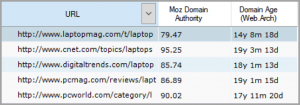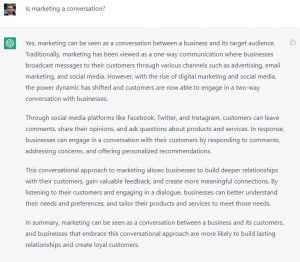When companies start planning for an online community, their number one question is “how do I increase engagement?” Not only do we get that question all that time, but also hundreds of companies we recently surveyed said that community engagement was their top challenge.
So how do companies foster a vibrant, active community? What actually makes a community a place where customers will
- return with regularity and contribute to conversations?
- get questions answered, help others, and share ideas and common interests?
- feel a meaningful connection with your company and with other customers?
Setting up an online community is table stakes in today’s digital world for companies that want to reduce support costs, build credibility, get product ideas, sell and more.
Here are 10 sure-fire ways to foster community engagement to build a community of vocal, passionate, and motivated customers:
#1: Start With Relevant, Compelling Content
From the start, seed your community with high quality content. Put yourself in your customers’ shoes and think about what information they need. Which commonly-asked questions can you make available? How can you best organize information into easy-to-navigate categories? Where might a video better educate customers? Some companies think about content across the customer lifecycle, from information on getting started to content that helps customers become power users and get the most value over time. Monitor how this foundational content performs and prune and add as you learn. If your content isn’t relevant right out of the gate, customers who show up aren’t likely to return.
#2: Make the Community Easy to Find
It doesn’t matter how great your community is if no one knows it’s there. A strong community has multiple entry points. The obvious location is attached to your corporate web site. Another common place is integrated into your company’s Facebook page where customers often go with questions or comments. More and more companies also integrate community into their customer portal, making it part of the single sign-on process. Where appropriate, you can even embed an online community into your actual product for greater contextual help. This way, customers never have to leave to get answers.
#3: Position Community as Part of the Customer Experience
Your community should be an extension of your overall value proposition. Consider your community as a central feature in your customer relationship and position it that way. When you first sign a new customer, make an introduction to the community part of their on-boarding. Some community managers even do a multi-touch campaign to new users to pull them in. Showcase the community in marketing materials and customer communications and be proud of what it says about you as a forward-thinking, transparent and service-oriented company. The more importance you place on your community, the more customers will follow suite.
#4: Keep Content Fresh and Interesting
Establish a process for creating and maintaining a dynamic community. Think of your community as an ever-changing environment where you are always removing old content and adding new. Make a practice of analyzing what customers are searching for and proactively create that content. Look for themes and trends that merit more information. Determine where customers drop off and devise a strategy for how you can provide better help. Every time you release new product features, for instance, expect the cycle to begin again with refreshed, seeded content. Keep in mind that as a community matures, customer content often becomes more complex in nature. This is a good sign that simple questions are getting answered easily and that customers trust the community to help them with more nuanced interactions or special cases.
#5: Give New Members a Warm Welcome
A new member in the community is cause for celebration. Reach out and welcome them to the group. Community managers do well to start by introducing themselves and sharing the overall purpose of the community. In the communication, they can explain how to get started, including instructions on how best to search, navigate, post, and complete a profile. It’s also a great idea to ask the new member to take an action so they are quickly oriented toward participation. That action might be as simple as getting them to ask a question or subscribe to a topic. In a smaller community, they may even be encouraged to introduce themselves to the group.
#6: Offer Exclusive Content
One way to condition customers to keep coming back is to share content they can’t get anywhere else. You might offer advanced notice on training opportunities or proactively publish alerts, such as known issues or outages. Some companies use their community as the place to sign up for a webinar, take a survey, or subscribe to a newsletter. Whatever you use to draw customers in, be sure that the surrounding content they see is also engaging and reinforces your community’s overall purpose.
#7: Involve Company Employees
Engagement is a two-way street. It’s not just about getting customers to be active. Savvy companies also motivate company employees to get involved in the community. Some use their community as an onboarding tool, having new hires spend time observing what customers are asking and what the answers are. Other companies require a few hours every month of ‘community service’ from every employee, thereby keeping everyone in tune with the customer. Find ways to draw in employees so that customers see the many faces behind your organization and the passion they have to serve. Remember to provide a bit of training to your employees on the “voice” you want your company team members to have when communicating so directly with customers. Things like keeping a positive tone and being helpful, friendly, and authentic.
#8: Reward Customers for Contributions
Getting customers talking to each other is a beautiful thing. So it’s important to reward customers for weighing in, especially if it’s their first time. Watch and see who jumps in and thank them. Maybe drop them a tee-shirt or other small, branded item in the mail. You might entice those who have not yet engaged with a “question of the week.” Ideally, you can encourage certain individuals to contribute based on their unique knowledge or perspective. A community manager can determine a registered community member’s industry, title, or topics they follow. They can single out the kind of person most likely to have a valuable point of view on a particular subject and invite them to share their expertise. Most importantly, make giving thanks a daily practice. Showing appreciation for community contributions is one of the best ways to reinforce the kind of behavior you are after.
#9: Develop a Champion Program
A formal champion program recognizes and rewards subject matter experts for their contributions in the community. These programs often include leaderboards and gamification features that showcase the most helpful and valuable members. They also include reputation data so other customers can gauge the credibility and trustworthiness of a comment. Be sure to recognize your biggest contributors with public or private recognition, prizes, or the occasional small reward (mugs, hats, and other branded items are surprisingly popular!). Some companies give Champion of the Year awards for both quality and quantity of content. One Get Satisfaction company even sends its best champion to the company’s user conference—all expenses paid.
#10: Crowd-Source
Leverage the power of the crowd to solve issues, provide insights, and share ideas. Customers often share on their own, but if a community has a mechanism for proactively inviting the customer base to weigh in, the results are far more powerful. Post a question that your company has been wrestling with and see what the community has to say. Companies often solicit ideas for creative new applications of an existing product. Customers share what they’d like to be able to do with the product. Other customers weigh in on the ideas presented and share their own thoughts. This is an excellent way to inspire high value peer-to-peer interactions.
There’s no shortage of ways to foster a lively and collaborative community culture. Like any relationship, you get back what you put in. Make those who come to your community feel welcome, important, knowledgeable, and imaginative and your community engagement will surge.
Digital & Social Articles on Business 2 Community
(323)




